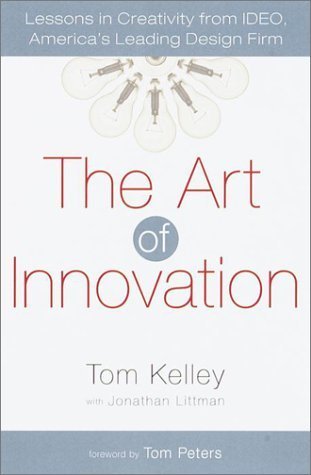 I just finished "Art of Innovation", by Thomas Kelly, last week. These are just a collection of points that resonated with me. Obviously this book covers much more, but I figured I'd share some of the things that struck me about IDEO and their process from a designer's perspective. My background is coincidentally industrial design, so most of the subject matter they covered is, in a word, refreshing.
I just finished "Art of Innovation", by Thomas Kelly, last week. These are just a collection of points that resonated with me. Obviously this book covers much more, but I figured I'd share some of the things that struck me about IDEO and their process from a designer's perspective. My background is coincidentally industrial design, so most of the subject matter they covered is, in a word, refreshing.If there's one thing I'd take away from this book, it would be for designers to be more observant and take more risks through prototypes. And try to have fun. Though I'm sharing notes from my own perspective, I believe everyone should skim through this book, regardless of what industry you're in.
This book was recommended to me by Jim Lane, our user experience director at AddThis/Clearspring. I don't know about you, but I am really looking forward to trying some of these techniques 2010.
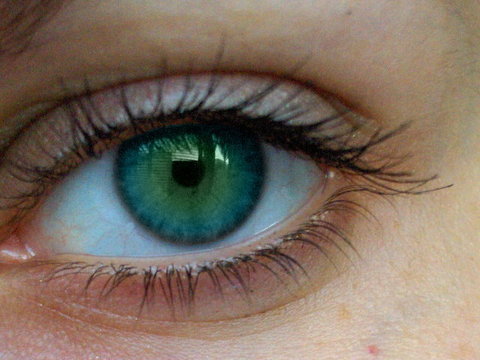 Innovation starts with an "eye". Asking people for an opinion is not enough—observe every detail and watch how people interact with a product. Then create a bug list of all the problems and pain points.
Innovation starts with an "eye". Asking people for an opinion is not enough—observe every detail and watch how people interact with a product. Then create a bug list of all the problems and pain points.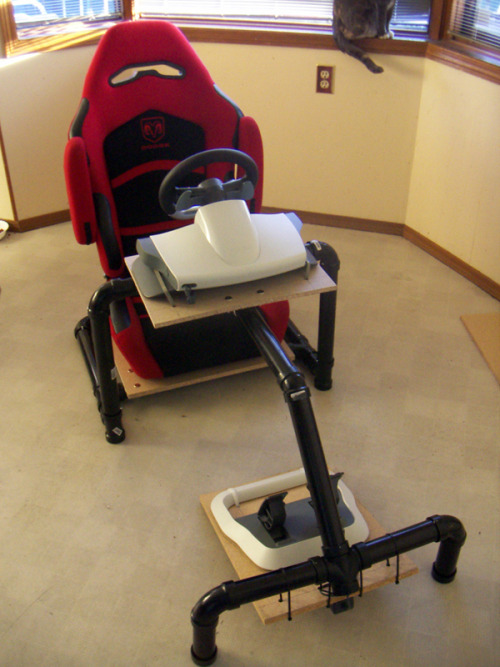 You learn more from people who use the product and break the rules. Observation isn't enough. You have to look past it and examine their motivation. What it could do, "if only...".
You learn more from people who use the product and break the rules. Observation isn't enough. You have to look past it and examine their motivation. What it could do, "if only...".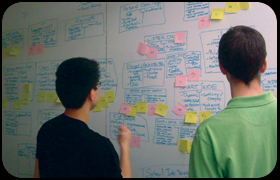 IDEO explains that brainstorming is a craft that can be refined. They have "hot" brainstorming sessions all the time that leave people vibrating with excitement. Here are some things Kelly mentions...
IDEO explains that brainstorming is a craft that can be refined. They have "hot" brainstorming sessions all the time that leave people vibrating with excitement. Here are some things Kelly mentions...Techniques and Tips
Focus on problem solving
Have playful rules
Go for quantity
Number your ideas (this is key)
Look for ways to leap and jump and really kick the brainstorm up a notch
Warm up with word play games
Everyone should bring a show and tell item
Be visual and cover the walls, table and ground with paper
Be physical and try to act out the scenarios (this is called body storming)
Bring food (like cookies or lunch)
How to kill brainstorming
A boss gets to speak first
Only one person gets to talk a time
Experts only
Going off site
Rules like: No silly stuff. No wacky ideas.
 Prototype. Never go into a meeting without a prototype. Always look for opportunities to make prototypes. When you go into a meeting with a prototype, it's easier for people to play and react to a product. Prototyping can communicate problems and should be iterated on. This process allows you to "fail well" by taking risks early. Try to see what rules can be broken.
Prototype. Never go into a meeting without a prototype. Always look for opportunities to make prototypes. When you go into a meeting with a prototype, it's easier for people to play and react to a product. Prototyping can communicate problems and should be iterated on. This process allows you to "fail well" by taking risks early. Try to see what rules can be broken.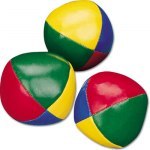 Failing well is a lot like juggling. For example, small bean bags are optimal for learning—they don't roll or bounce away, hurt your hands or punish you for making mistakes. When you juggle enough and gain some more experience, you can take bigger risks... perhaps moving up to something like bowling pins, or even knives.
Failing well is a lot like juggling. For example, small bean bags are optimal for learning—they don't roll or bounce away, hurt your hands or punish you for making mistakes. When you juggle enough and gain some more experience, you can take bigger risks... perhaps moving up to something like bowling pins, or even knives.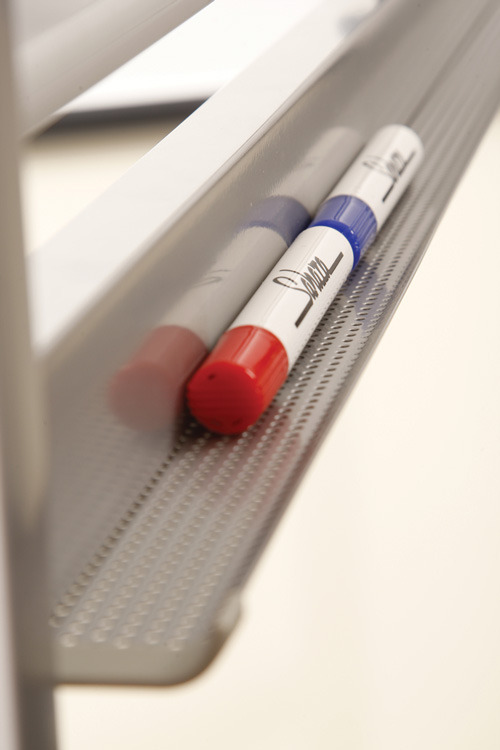 Build work spaces that encourages prototyping, drawing, and sketching.
Build work spaces that encourages prototyping, drawing, and sketching.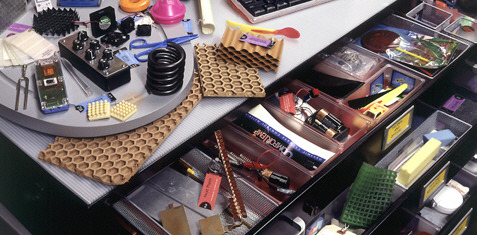 IDEO has something called the Techbox. It contains a collection of innovative products that people can play with. If you're looking for inspiration, this where you go to get ideas.
IDEO has something called the Techbox. It contains a collection of innovative products that people can play with. If you're looking for inspiration, this where you go to get ideas.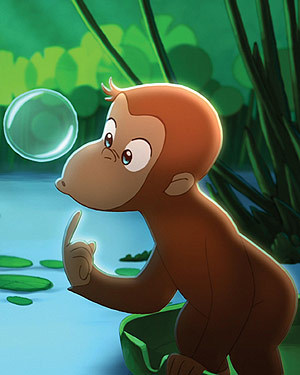 Hiring people who are curious. IDEO doesn't always hire experts in their field. They look for people who are really curious, and have a can do attitude.
Hiring people who are curious. IDEO doesn't always hire experts in their field. They look for people who are really curious, and have a can do attitude.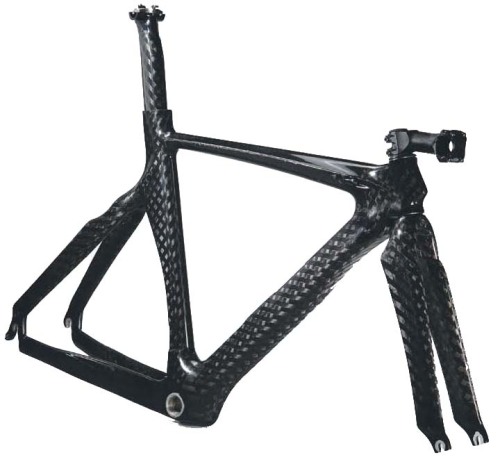 Look outside at other industries for inspiration. IDEO often looks at the bike industry as well as toys for inspiration.
Look outside at other industries for inspiration. IDEO often looks at the bike industry as well as toys for inspiration. Only rule is to create less rules. Rules limit innovation.
Only rule is to create less rules. Rules limit innovation. The ultimate instructional design: The Wetnap interface. "Tear open and use." All interfaces should strive to be as simple as this. If there is a process that is really complex, it should be designed to be manageable. Example: IDEO designed a defibrillator that a child could safely use, literally.
The ultimate instructional design: The Wetnap interface. "Tear open and use." All interfaces should strive to be as simple as this. If there is a process that is really complex, it should be designed to be manageable. Example: IDEO designed a defibrillator that a child could safely use, literally. Don't let features blur what people should do with your product.
Don't let features blur what people should do with your product. Have fun. IDEO makes every project fun and playful.
Have fun. IDEO makes every project fun and playful. If you have a deadline, set up time to show your boss ideas early.
If you have a deadline, set up time to show your boss ideas early. is a journal by
is a journal by 









No comments:
Post a Comment